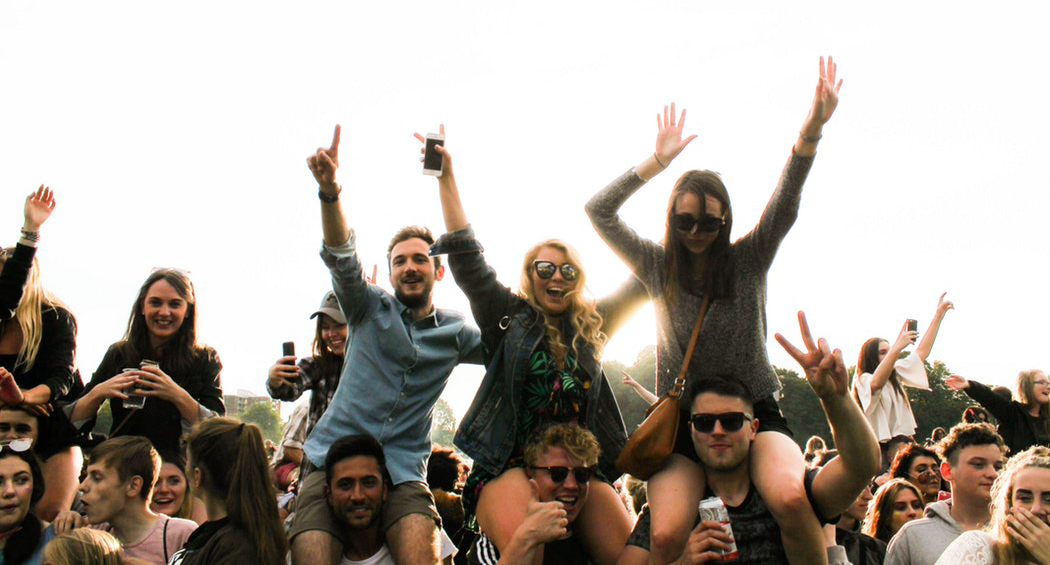
Your Best Event Ever: 17 Tips for 2017
The year has come to a close and as of 2016, SpinGo has worked with over 6 million events both online and onsite. Many event makers have shared their insights, struggles, and triumphs with us that reaffirm our belief that experiences are greater than things. As an event maker, you have the power to get people off the couch and out experiencing life. Events help to fulfill that need for human connection that everyone is searching for. It’s our goal to help you create better experiences for your attendees to keep them coming back time and time again. We know that putting on an event is challenging and an event can have over a hundred moving parts. Based on our experience with events, attendees, and event makers, we’ve compiled the top 17 tips to help you create your best event to date.
When planning your next event, consider the following tips:
1. Pre-sale Tickets
Pre-sale tickets are your friend! Pre-sale tickets can help generate revenue before the day of the event. The more revenue you can generate before the event, the more freedom you have to amplify your event. Pre-sales can also help cut down line times onsite, creating a better attendee experience.
2. Price At-Door Tickets Higher
If you have pre-sale tickets, make sure that the at-door tickets are most expensive. This will encourage attendees to buy their tickets beforehand. An early bird pricing model can help you to boost pre sales and generate revenue before the event takes place.
3. Make Buying Simple
Is your ticketing platform easy to use? Remember, the more clicks it takes to buy a ticket, the more you will lose conversions. Look for ticketing platforms that make it easy for your user to buy tickets. A one page checkout for your online ticketing is ideal. You may want to consider embedding the ticketing on your site so that your customers won’t have to leave the page to buy a ticket. As an event maker, one of your main goals is probably ticket sales, so make it simple for your attendee to help you reach that goal.
4. Think Like an Attendee
Put yourself in the attendees’ shoes when planning the event. Things like easy parking, venue location and accessibility, quick ticket lines, weather, traffic, and pricing can sway attendees who are trying to decide whether or not to come.
5. Consider Competition
Consider other competing events in that area and national holidays that fall within the same timeframe as your event date. Consider moving the event to a different date if there is too much competition within that timeframe.
6. Provide Clarity
Clearly state ticket prices. Ticket prices can be a huge factor for attendees interested in your show. Don’t make your attendees search high and low to figure out your ticket prices. If children are free, make sure to include that on your flyers, posters, website, etc. Clearly state event details including location, schedules and times, and any other important information pertaining to the event.
7. Advertise for Your Audience
When marketing the event, think of your demographic. Don’t waste time or money on platforms that your audience doesn’t typically use. Use copy and imagery that your audience will relate to.
8. Create a Landing Page
Make sure all your ads lead to the webpage with the most information about the event. Have a clear call to action on this page to buy tickets. A large “BUY NOW” button or embedded ticketing iframe can help to increase conversions.
9. Consider Time and Travel
Will people be attending from out of town? Consider holding your event near hotels so your guests won’t have to travel even further to get to your event. Consider travel conditions for those coming from out of town. Is your city Uber or Lyft friendly? Is your event easily accessible to all attendees? These are all things to consider as you plan your event.
10. Grow Organically
Create a Facebook event page for your event. Have everyone in your organization share the event on their Facebook page and invite as many people as they can to the event. This will help your event awareness to grow organically (which is free!) and will create a snowball effect of friends inviting friends, etc.
11. Control Your Lines
Two words: Line control. Have separate lines at the gate of your event. One line should be for people buying tickets and one should be for people who took advantage of presale tickets. Have signage, barriers, and volunteers directing attendees where to go. This also helps to encourage people to buy ahead of time because the presale line will always move faster than the ticket purchase line. It seems to be human nature to hate standing in line, especially when you are at an event to have a good time. Create a better attendee experience by practicing intelligent line control.
12. Create a Retargeting Campaign
Consider retargeting in your online advertising campaigns. Retargeting is an excellent way to keep your ads in front of your audience. Your audience may need to see your ad a few times for it to make a lasting impression in their mind. Retargeting allows you to have your ads follow a user online. Each time they see your ad, they will be reminded of your event and will be encouraged to buy tickets. Learn more on how to use retargeting for your event.
13. Create a Sense of Urgency
Most attendees will wait until the last possible moment to buy tickets. Combat this by creating a sense of urgency to buy tickets. Create a FOMO (fear of missing out) around your ticketing. Early bird pricing, giveaways, promo codes, timed sales, and a “tickets available” countdown can help to create urgency for your attendees to buy tickets.
14. Have a User-Friendly Website
Make your event website easy to navigate. We cannot stress this enough. A user will often spend less than 7 seconds on a webpage before they move on to something else. If it takes your attendee any effort to navigate through your website, they will most likely leave your site before they view the content that you’d like them to view. Make sure your website is user friendly with a clear call to action to buy tickets.
15. Explore Advertising
Don’t put your eggs all in one basket. Advertise on multiple channels. Explore different forms of marketing to find out which ones bring in the most conversions. Find the channels where your audience is most likely to see and respond to your ads. Adjust your budget accordingly after you have enough data to see which platform is the best to advertise your event.
16. Survey Attendees
Ask your attendees where they heard about the event. This will help you to know which forms of marketing are converting into ticket sales. Have volunteers survey the crowd. Feel free to ask your attendees questions that will help improve future events such as “What attracted you to this event?” or “What could have been done to improve your experience?” Sometimes raw feedback from your attendees can be the most beneficial.
17. Use Traditional Forms of Marketing
Despite the challenges of tracking impressions, flyers, billboards, and posters can still create a good return for your event. Be strategic about where you place these forms of traditional marketing. Post in places where members of your target demographic are sure to be. Have a simple website address or QR code printed on your flyers and posters so that your audience can easily find more information and buy tickets.
Here’s to the end of another eventful year and to the start of an even better one! Use these tips to create your best event to date. We’d love to hear about your experiences as an event maker or attendee. Be sure to comment below with your insights!





